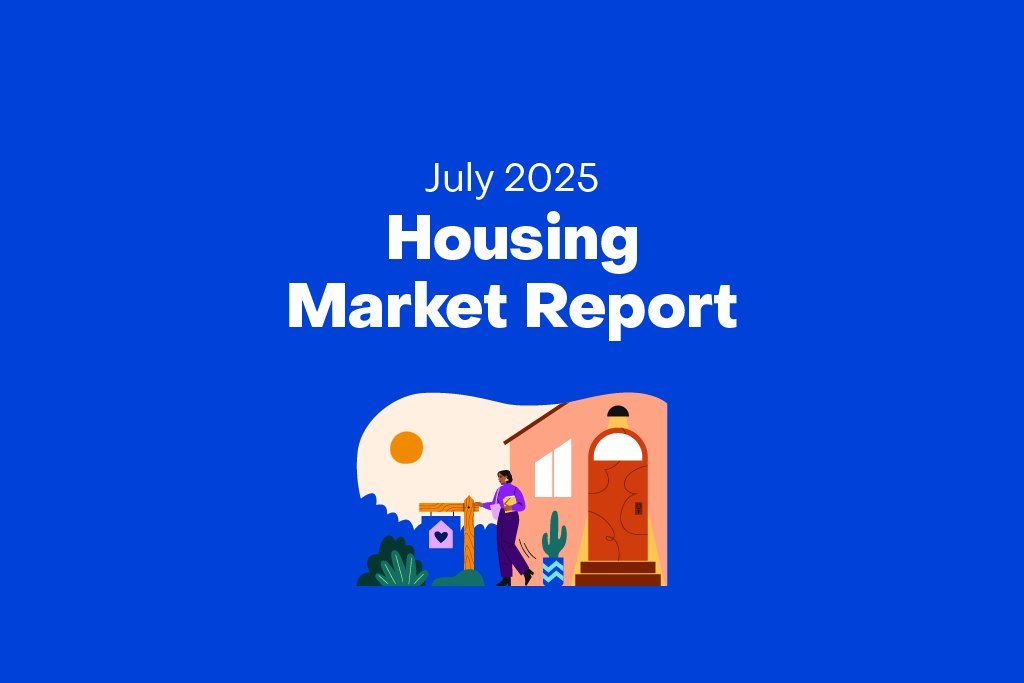Why Home Values Are Rising in Half the Country, Falling in the Other


Home values fell in half of the nation’s largest markets over the past year. Shoppers who can afford a home are gaining leverage in negotiations — high costs and economic uncertainty have pushed their competition to the sidelines. Sellers are cutting prices at record rates to try and entice buyers.
Home values rose over last year in 25 major markets, mostly in the Midwest and Northeast. Demand is high — especially in affordable areas — but building restrictions put a damper on new and higher-density projects. Sellers have few options to move up to, and existing inventory is still below pre-pandemic averages in many metros.
Meanwhile, home values have fallen year over year in 25 markets — most of them situated in the South or West — restoring a tiny chunk of affordability lost in the early pandemic run-up in prices. In the South, builders have kept up with demand better, easing price pressure and giving homeowners options to move into. Buyers are likely still running into affordability walls in expensive western coastal metros like San Francisco and San Diego.
Home value appreciation is nearly flat at the national average, rising just 0.2% over the past year. Lower rates and low price growth have slightly improved affordability; monthly mortgage costs [1] are down $19 over the past year, but the typical payment is still nearly $1,000 per month higher than before the pandemic.
Among the 50 largest U.S. metros, home values rose the most in the past year in Cleveland (4.7%), Hartford (4.5%), Louisville (3.9%), Detroit (3.8%) and Buffalo (3.7%). However, even these gains are modest compared to the rampant double-digit growth seen three or four years ago.
Florida and Texas, both former hot spots for housing demand and skyrocketing prices, are home to the major metros seeing home values fall the fastest. Annual declines in typical home values are largest in Tampa (-6.2%), Austin (-6%), Miami (-4.6%), Orlando (-4.3%) and Dallas (-3.9%).
Affordability and access is gradually improving where builders have been able to keep up with demand, showing why building more homes is so critical. Metros where price corrections are steepest are among those with the largest increase in inventory compared to before the pandemic. All of these metros except Miami rank among the top 10 for home building permits from 2020 to 2024. When demand for homes surged, builders were able to respond fastest in areas with fewer land-use restrictions. That gave buyers more options and sellers more homes to move into, freeing up existing supply.
New construction is slowing the growth of a nationwide housing deficit, but a gap of 4.7 million units persists. The underlying demand for homes is out there — at lower price levels.
Sellers cut prices on 27.4% of listings in July, the highest share since Zillow began tracking this metric in 2018. Cuts are more common in the South and the Mountain region, and are less widespread in markets more favorable to sellers in the Northeast and on the West Coast.
Zillow’s market heat index shows competition among buyers continues to decline nationwide, reaching the lowest point for any July since at least 2018. Now, 27 major markets are either balanced or in the buyer’s favor — three more than last month, and nine more than last July.
Homes are taking longer to sell than in recent summers, and the gap between attractive listings that sell and others that linger is growing. Listings that sold in July did so in 24 days, six days slower than last year but just one day longer than the pre-pandemic average for July. However, the median lifespan of all listings on Zillow is 60 days, four more than the pre-pandemic average. The gap between those two figures is the largest for any July in Zillow data, which began being collected in 2018.
[1] The monthly cost of a mortgage payment when using a 20% down payment to purchase a home priced at the Zillow Home Value Index, using the monthly average mortgage rate for a 30-year fixed rate loan.